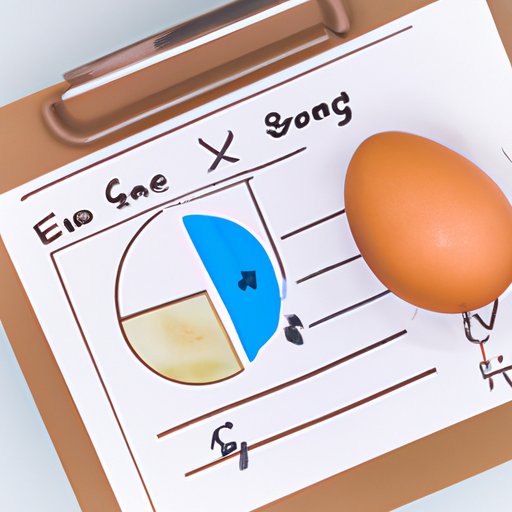
Introduction
Eggs are a staple in most households, whether it’s for baking, cooking, or eating breakfast. However, bad eggs can lead to food poisoning and other health issues. But how do you know when an egg is bad? In this article, we will explore several methods you can use to determine if an egg has gone bad. By the end of this article, you’ll be equipped with the knowledge to keep your eggs fresh and avoid any unpleasant experiences.
Visual Cues
One of the easiest ways to tell if an egg is bad is by looking at it visually. If the egg has a visible crack, it’s best to discard the egg since bacteria can enter through the crack. If the egg appears discolored or has an unusual texture, it’s most likely gone bad. Fresh eggs should have a translucent white with a bright yellow yolk. If the egg white appears cloudy, yellow, or greenish, the egg is no longer fresh and should be thrown away.
Smell Test
The most common method to determine if an egg is bad is by conducting a smell test. Hold the egg close to your nose and sniff. If the egg has a bad odor, it’s probably gone bad. Fresh eggs have a neutral smell and don’t have a strong odor of any kind. If the egg smells sulfuric or rotten, it’s best to dispose of it immediately.
Float Test
To do the float test, fill a bowl with cold water and place the egg inside it. If the egg sinks to the bottom and lays flat on its side, the egg is still fresh. If the egg stands upright at the bottom or floats to the top, it’s gone bad. Over time, eggshells become more porous and allow air to penetrate the shell, leading to gas build-up, causing the egg to float. Therefore, it’s best to discard any eggs that float.
Shake Test
To conduct the shake test, hold the egg close to your ear and give it a gentle shake. If the egg makes no sound or a faint swishing sound, it’s fresh. But if the egg sounds like it’s sloshing around, it’s a sign that the yolk has broken down, and you should dispose of the egg. When an egg is fresh, the yolk and white stick together and create no sound when shaken.
Date Stamp
Checking the date stamp is crucial when determining whether an egg has gone bad. If the eggs are past the sell-by or expiration date listed on the package, it’s best to avoid using them. However, if the eggs are within their expiration date, you can still check if they’re fresh by using the tests mentioned above.
It’s important to note that the date stamp is not a guarantee of freshness. Some grocery stores may sell eggs beyond their expiration date, leading to a risk of purchasing bad eggs. It’s always best to conduct the fresh tests when purchasing and using eggs.
Cracking Test
To do the cracking test, crack the egg into a bowl and look for visual and smell cues. If the egg has an unusual smell or looks discolored, throw it away. Additionally, if the egg white is runny or watery, the yolk breaks easily, or the eggshell appears slimey, it’s gone bad. Trust your sense of smell and sight since bad eggs can cause illness if you consume them.
Trusting Your Instincts
Trusting your instincts is essential when it comes to consuming eggs. If any of the fresh tests above indicate that the egg is bad, it’s best to discard it. However, if the egg appears fresh but still doesn’t feel right, trust your instincts and discard it. It’s better to err on the side of caution and avoid any potential health risks.
Conclusion
By now, you should have a good understanding of how to determine if an egg has gone bad. Utilizing the visual, smell, float, shake, date stamp, and cracking test can help you determine the freshness of an egg. Always remember to trust your instincts and err on the side of caution to avoid any health risks. With this knowledge, you can confidently use eggs in your cooking and avoid any unpleasant experiences.
If you have any further questions about determining the freshness of an egg, please feel free to reach out and ask.




